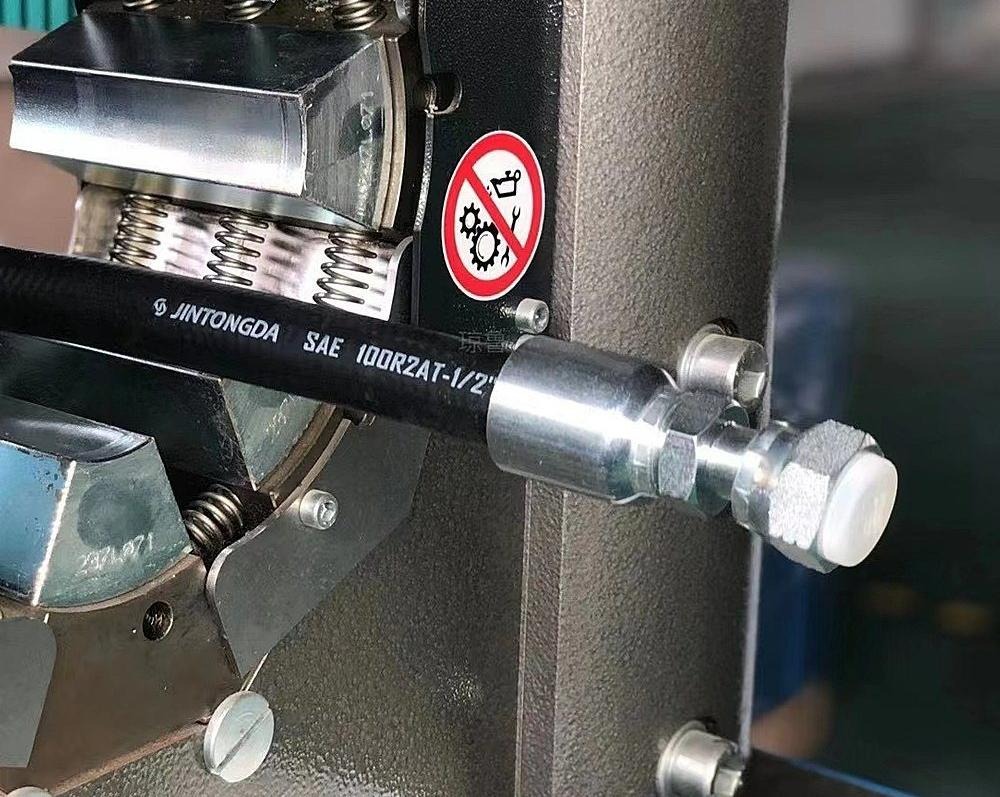Hydraulic hoses play a vital role in the smooth operation of hydraulic systems. These hoses are designed to transport hydraulic oil under high pressure and are known to be resistant to high pressure, abrasion, and corrosion. However, in order to ensure the safety and efficiency of the hydraulic system, regular maintenance and inspection of rubber hydraulic hoses is essential.
Regular maintenance and inspection of rubber hydraulic hoses is critical for many reasons. First, it helps identify and resolve potential issues before they escalate into major problems. Over time, hydraulic hoses can deteriorate from exposure to factors such as extreme temperatures, abrasion, and chemicals. With regular inspections, any signs of wear, damage or degradation can be detected early so they can be repaired or replaced promptly.
Additionally, maintaining and inspecting rubber hydraulic hoses is critical to ensuring the safety of personnel and equipment. Hydraulic hose failure can result in the release of high-pressure hydraulic fluid, resulting in a serious safety hazard and potential damage to surrounding equipment. By proactively maintaining and inspecting hydraulic hoses, the risk of unexpected breakdowns and accidents can be significantly reduced.
There are several key practices that should be followed when maintaining and inspecting rubber hydraulic hoses. First, it's important to inspect your hoses regularly for any signs of wear, such as scrapes, cuts, or bulges. Additionally, hose fittings and connections should be inspected for signs of leakage or damage. It is also crucial to ensure that the hose is properly secured and supported to prevent any unnecessary stress or strain.
In addition to visual inspections, hydraulic hoses should be pressure tested periodically to evaluate their integrity and performance under operating conditions. This can help identify any weaknesses or potential issues that may not be visible through visual inspection alone. By conducting a thorough pressure test, any hose that does not meet the required performance standards can be identified and replaced as needed.
For companies that rely on hydraulic systems for their operations, having a comprehensive maintenance and inspection program for rubber hydraulic hoses is critical. This may involve creating regular inspection checklists, scheduling routine maintenance activities, and keeping detailed records of the condition of each hose. Additionally, providing training to personnel on the importance of proper hose maintenance and inspection can help ensure that these practices are consistently adhered to.
In summary, maintaining and inspecting rubber hydraulic hoses is critical to maintaining the safety and efficiency of your hydraulic system. By proactively identifying and resolving potential issues, companies can minimize the risk of unexpected failure and ensure reliable operation of hydraulic equipment. With regular maintenance and inspections, hydraulic hoses can continue to perform their critical role in transporting hydraulic oil within hydraulic systems, contributing to the overall productivity and safety of industrial operations.
Post time: Sep-13-2024



